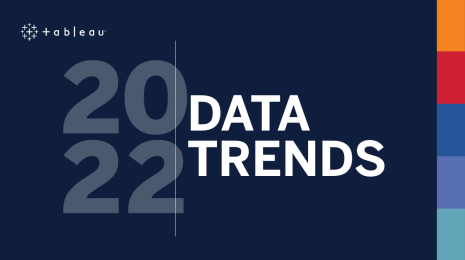Federal Data Strategy should be a work in progress, by design
The recently released draft Federal Data Strategy One-year Action Plan provides a roadmap to help federal agencies meet two cross-agency priorities of the President’s Management Agenda: leveraging data as a strategic asset and developing a 21st century workforce.
Because the cross-agency team responsible for the Action Plan is requesting input, we reviewed the Plan with an eye towards how our customers across the public and private sectors have found success accomplishing their missions with analytics. We believe the Action Plan has a strong foundation. But there are some areas where we believe the Plan could be strengthened, particularly around establishing continuous improvement processes.
We believe the Action Plan is well thought out and addresses the biggest challenges in how the government needs to transform to leverage data. Establishing continuous improvement processes will help ensure its success.
Our most successful customers regularly evaluate and improve how they use data. They take systematic approaches to discovering analytics use cases, governing data and content, and deploying broadly across the organization. Then they evolve these efforts based on their performance. Earlier this month, we detailed these processes when we released the step-by-step guide to becoming a data-driven organization that we call Tableau Blueprint.
Because we know that Blueprint’s approach to analytics can succeed in the federal government, we’ve proposed incorporating tenets from Blueprint into the Action Plan. Most of our suggestions fall into the four areas summarized below.
Adopt modern approaches to learning data skills
Two of the Strategy’s actions deal with improving data skills in the government:
- Action 2 seeks to create a catalog of training and credentialing resources
- Action 14 provides agencies a framework to measure the gaps and prioritize needs.
We believe training and credentialing are important to learning and worthy of categorization. But we also believe it’s important to create broad awareness of myriad free, online educational materials, community resources, and user groups where data learning flourishes.
For many people, learning data skills like Tableau starts long before any formal training program—perhaps to address questions on a quick turnaround project—and the learning journey should continue, long after an employee has gone through official training and credentialing.
Therefore, we’ve proposed augmenting the government data skills catalog to incorporate all the resources available to help people learn, not just formal training and credentialing.
Create a plan for evolving data governance
The Strategy calls for the formation of a diverse data governance body in each agency (Action 12), a sound best practice. Bringing together stakeholders from IT, analytics, executives, and staff to shape governance models allows for better decision-making and builds confidence in data and analytics.
However, the Action Plan doesn’t require the governance bodies to create a plan to meet regularly to assess their governance models. Periodically evaluating data governance will help federal agencies adjust, evolve, and delegate responsibilities as analytical skills develop. Having seen customer deployments change as they scale analytics, we know the governance framework needed today won’t be the same one that is needed when tens of thousands of government employees are actively using data and analytics content.
Therefore, we’ve suggested that Action 12 of the Plan require agencies to establish an on-going governance review plan in addition to founding data governance bodies.
Implement on-going progress assessments
For data governance bodies to be successful, they must be informed by regular data discovery processes like the ones described in Action Items 13, 14, and 15. While the President’s Management Agenda calls for regularly assessing progress on leveraging data as a strategic asset, the Action Plan doesn’t require agencies to perform on-going assessments to support those regular reviews.
We think it’s important to add regular data discovery exercises into the Action Plan as well. Agencies must build a muscle of assessing their data infrastructure, data skills, and data needs. We have proposed changes to the Plan to require agencies to conduct on-going progress assessments.
Anticipate challenges with contingency planning
While some departments and agencies have extremely mature data operations, others are far behind and have limited budgets for improvements. This shouldn’t stop any agency from starting down the path that the Strategy outlines.
Instead, the Plan should build-in contingency planning for agencies that don’t keep pace. To ensure everyone gets up to speed, we recommend the General Services Administration and the Office of Management and Budget establish on-going assessments of the plan’s KPIs, publish results online, and offer support systems to the agencies that request them.
The Performance.gov website is off to an excellent start reporting on cross-agency priorities. We believe these agency-specific actions offer a great opportunity to continue sharing positive results with the public.
Why it’s all worth it
The draft Action Plan is ambitious, but necessary to turn data into a true strategic asset that supports federal agencies and helps them carry out their missions. We propose these changes because we care about supporting its success and believe that data-driven government can improve the lives of every American.
To read more about Tableau’s step-by-step guide to becoming a data-driven organization, visit our Tableau Blueprint website.
Autres sujets pertinents
Abonnez-vous à notre blog
Recevez toute l'actualité de Tableau.









